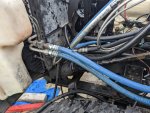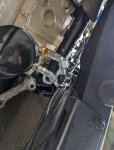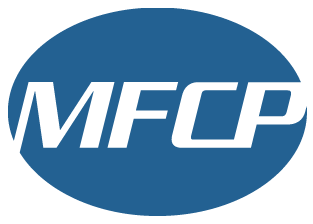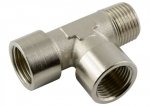Elektroman99
Active member
- 147
- 128
- 43
- Location
- Siegburg, Germany
Dear Steel Soldier Community,
this is a very specific question here regarding the oil lines going from the engine block and automatic transmission to the radiator. - I'll provide a better photo - I've looked through the TM once but can't find any specifics on the thread size.
There are two oil lines going on the left side between the radiator and breather and back to the engine block and automatic transmission respectively. (I may be wrong about this.) I would need to know what thread these oil pressure lines have at the front of the radiator so I can install adapter pieces there to pick up oil temperature and pressure.
A photo from my engine wash shows these oil pressure lines, they go under the steering linkage (See picture).

Can anyone help here?
Best regards
Elektroman99
this is a very specific question here regarding the oil lines going from the engine block and automatic transmission to the radiator. - I'll provide a better photo - I've looked through the TM once but can't find any specifics on the thread size.
There are two oil lines going on the left side between the radiator and breather and back to the engine block and automatic transmission respectively. (I may be wrong about this.) I would need to know what thread these oil pressure lines have at the front of the radiator so I can install adapter pieces there to pick up oil temperature and pressure.
A photo from my engine wash shows these oil pressure lines, they go under the steering linkage (See picture).

Can anyone help here?
Best regards
Elektroman99













